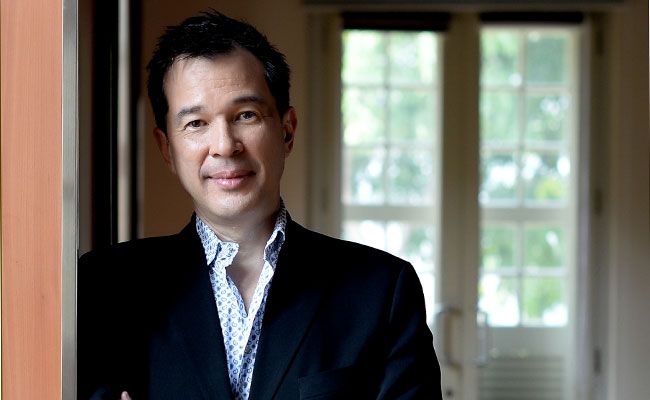Alan Chong, director of the Asian Civilisations Museum, shares with Melissa Gail Sing the central role of cultural exchange in fashioning modern Singapore.

Singapore’s art economy may be on the growth highway but, more than just a new engine to propel Singapore’s economy, art has a greater fundamental role in society. Alan Chong, an expert in art history who has served as a curator at the Isabella Stewart Gardner Museum, Art Gallery of Ontario and Cleveland Museum of Art, says art is a basic social expression that has been around since the beginning of time.
“People drew or painted on caves or in their huts and created images of objects for religious purposes, to bind themselves as a community. Even the tools they created bore little designs. These are all manifestations of the creative process. People have a basic need to make beautiful things,” he muses. “Art has also always been connected with society, with trade, with economics, with power struggles, with politics. It is a wonderful expression of all those historic principles. It has always been part of culture.”
Raised in Hawaii, a well-known cultural melting pot, Alan has long been intrigued with the idea of cross-cultural art, an interest that has only deepened since he became director of the Asian Civilisations Museum (ACM). Under his charge, the museum has introduced exhibitions that showcase new fused forms of art that are a result of Asia’s close interactions with the world. The recently concluded China Mania: The Global Passion for Porcelain, 800-1900, for instance, featured artefacts gathered not just from China but also the Middle East, Southeast Asia, Japan and Europe, showing through the medium of porcelain how international trade sparked creative exchange, resulting in new technologies and design innovation.
This notion of artistic exchange between cultures is a key focus in the repositioning of the museum, which is currently undergoing a phase-by-phase revamp that is expected to be completed by October this year. The initiative is aimed at promoting greater cultural understanding among different communities and will link ACM more closely with the Singapore River, the country’s historic heart.
Alan, who is also director of the Peranakan Museum and chief curatorial director for the National Heritage Board, explains the effect of this dynamic cultural give-and-take on societies even today: “With cross-culturalism, the intercultural contacts are very charged. At one extreme, they lead to conflicts, as recent events have shown, even war and genocide. But it also leads to incredible points of understanding
—bringing people together, having them live together, cooperating in exciting ways. It’s an exciting way of looking at the past. Knowing about these exchanges also helps us to appreciate that Singapore, like many other port cities, has never been able to function on its own. We depend on trade, immigration and migration, but also the exchange of ideas: of artistic values, religious values, language and food. All of these things come from somewhere else and in our mixed environment, something new is created.
“At the museum, we are trying to create new pathways to other cultures and other periods in the past when these things might have happened, for example in Goa, Manila, Macau or Jakarta. This helps visitors see that Singapore belongs to the entire world, and is a way of appreciating what Singapore has created as a tolerant place of understanding where people mingle and interact. So our collection will begin to focus more on these things, how art was created, by one nation for another, to be used around the world.”
A man who lives and breathes art, Alan also appreciates music and food. “They all connect. This sense of the past and of culture as a living ingredient is what I find very interesting. We have to keep reminding ourselves that nations are relatively new in this region, that the borders and governments have shifted a lot, so we’re more or less bound together rather than separated. Sometimes, we need to look beyond our borders.”
You might also like:
